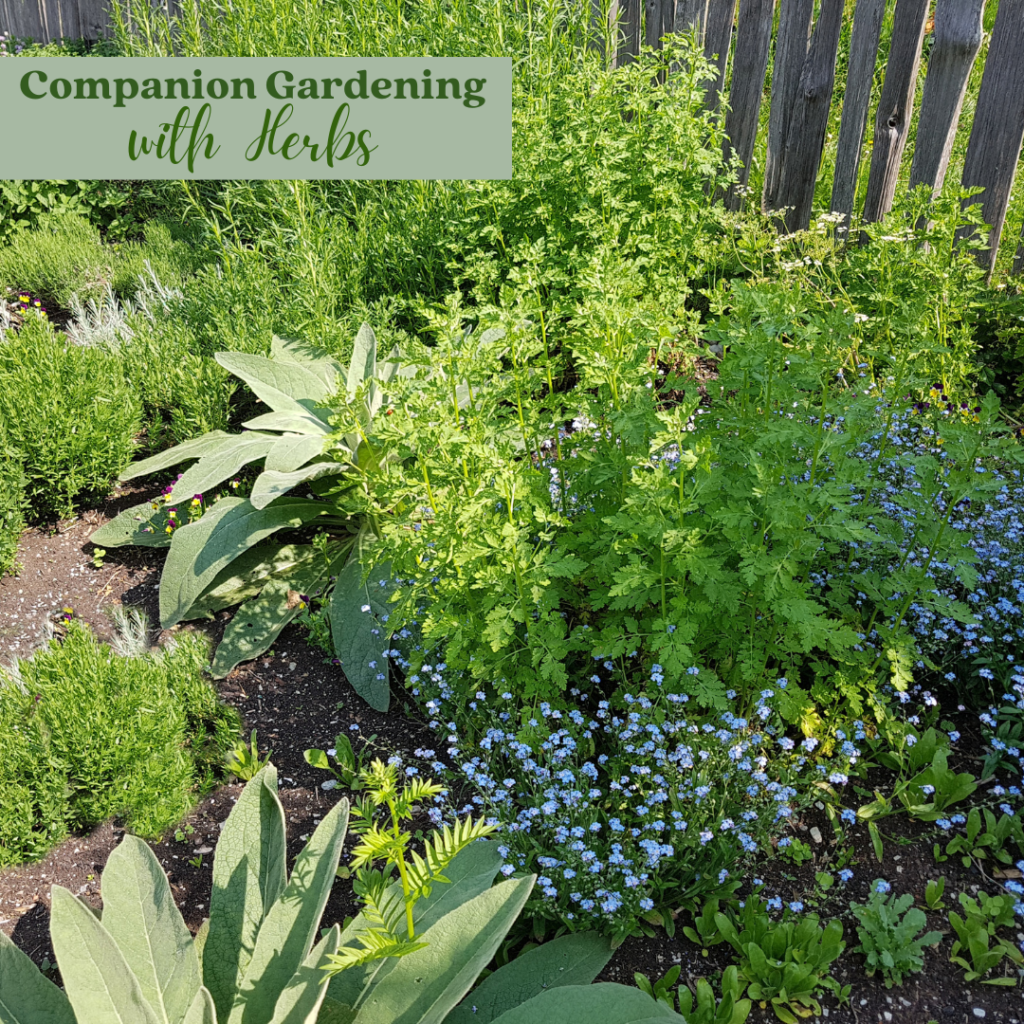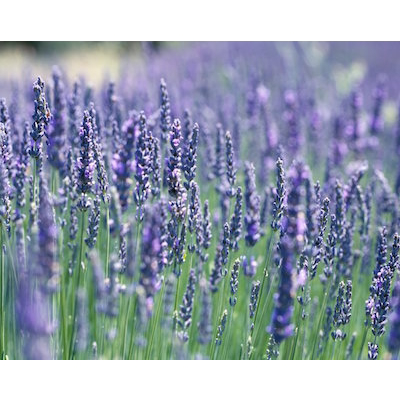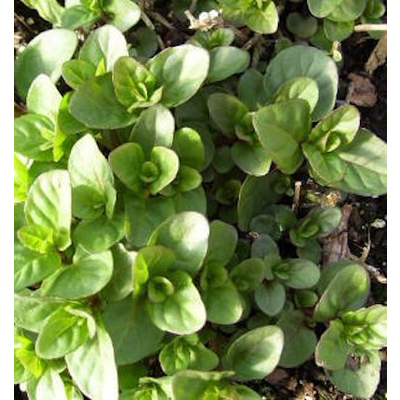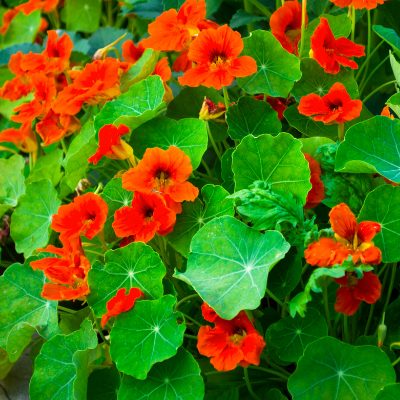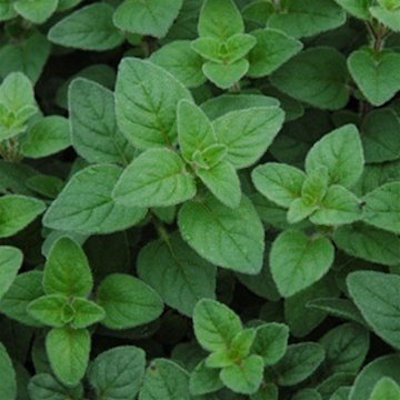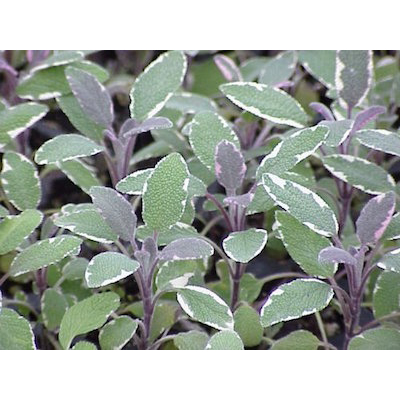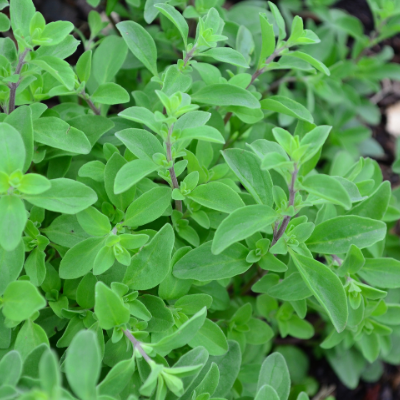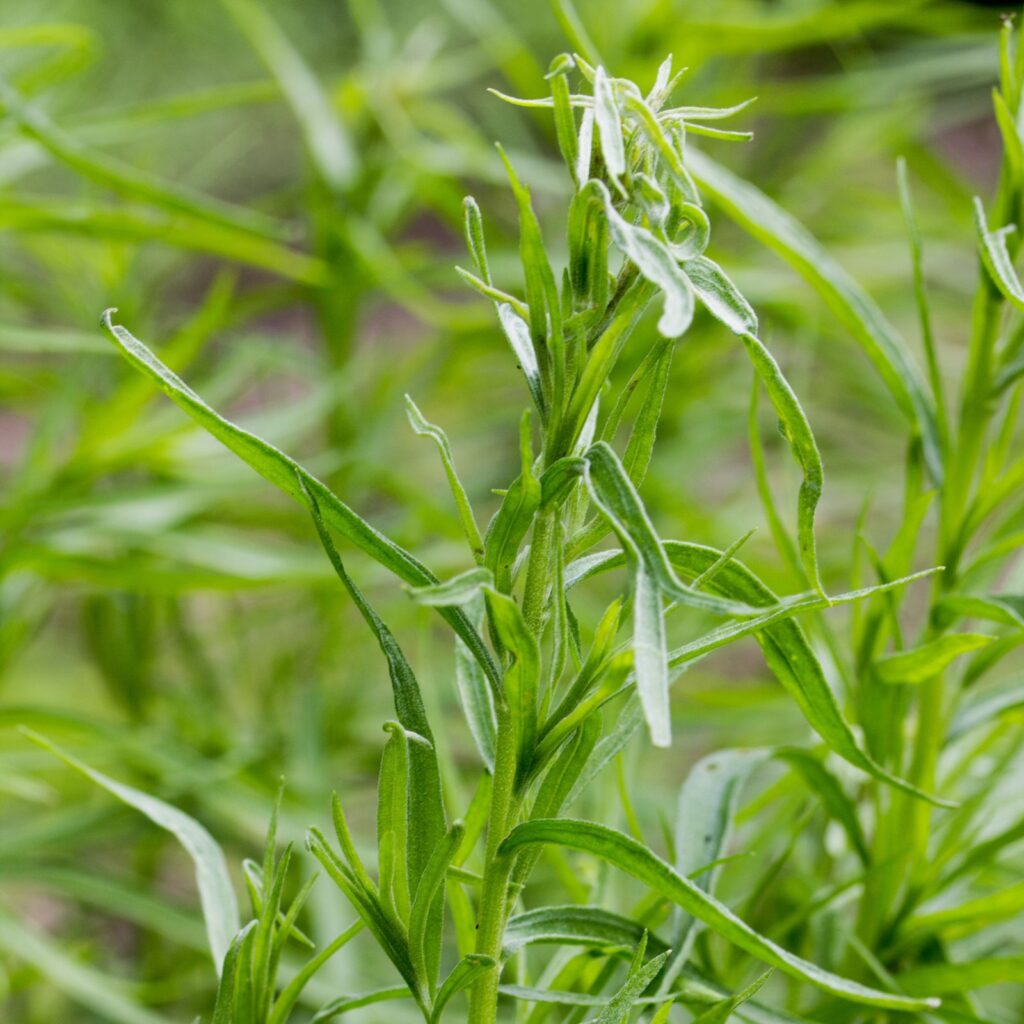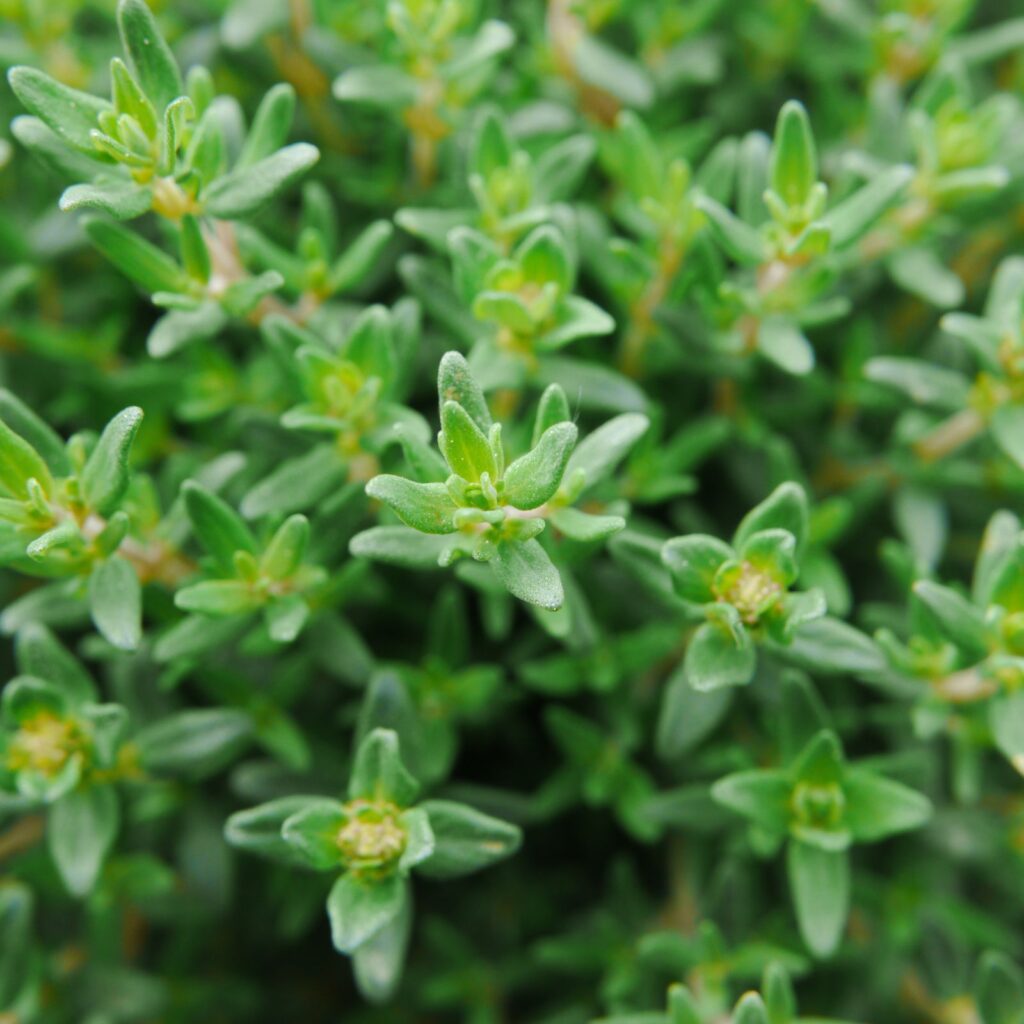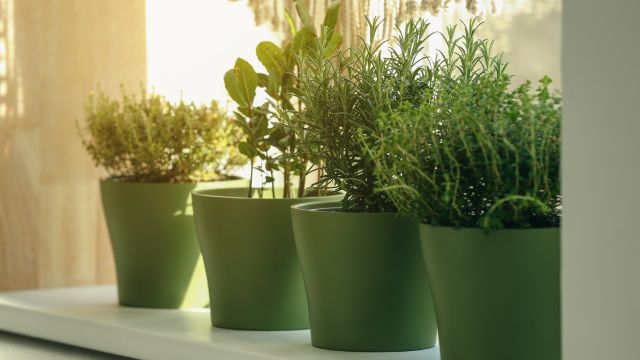
You don’t have to give up on fresh herbs once gardening season is over! You can grow all your favorites through the winter and all you need is a few pots, some soil, and a sunny window. Some gardeners move outside potted herbs inside in the fall but this can be stressful for the plant and runs the risk of introducing outside pests to your indoor growing environment. And usually by the end of one growing season, herbs have either gotten too large to move or have gone to flower and seed, neither of which gives you tasty fresh herbs. We recommend starting with fresh, new plants that you’ll keep inside until next spring. This article will teach you how to plant, grow, and maintain and indoor herb garden.
Choosing the Right Herbs
Some herbs such as mint do not do well indoors as they need room to spread and a long period of sunshine to grow. Choose instead herbs that you’ll use frequently in winter cooking such as thyme, oregano, sage, or rosemary. These herbs also grow in a compact style so they won’t need extra-large pots or a lot of room.
Start with a pot about two times the size of the plant’s root ball and one that has good drainage.. Be sure to put a drip tray underneath it! We recommend one herb per pot so you can better control each one’s light and inputs. Some may grow faster than others and could compete with a pot companion for light, water, and nutrients.
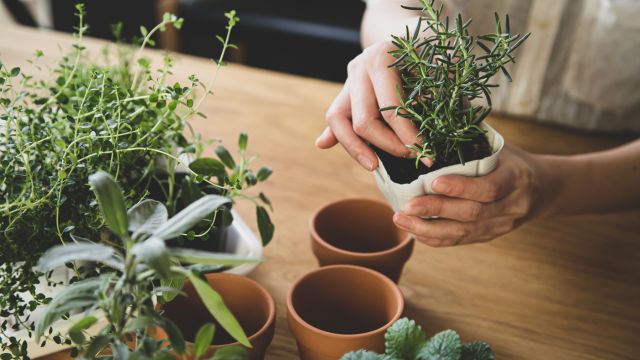
Light Needs for Indoor Herb Gardens.
Position your indoor herb garden near a south- or west-facing window so your herbs will get at least 6 hours of sunlight per day. Just make sure it’s not too cold or drafty close to the window. You can also supplement a full-spectrum grow light placed 6 to 12 inches above the herbs for 12 to 16 hours a day or plant your herbs in an all-in-one tabletop herb garden.
Soil, Water, and Feed Needs of Indoor Herbs
Most herbs will do just fine with a regular potting soil mix as long as they have good drainage. Like all potted plants, though, they need more frequent feeding. Be sure to choose a food- and pet-safe fertilizer.
Speaking of pets, like many household plants, some common herbs are toxic to cats and dogs. Be sure to research the plant you’re bringing in and keep it in a location your pets can’t reach.
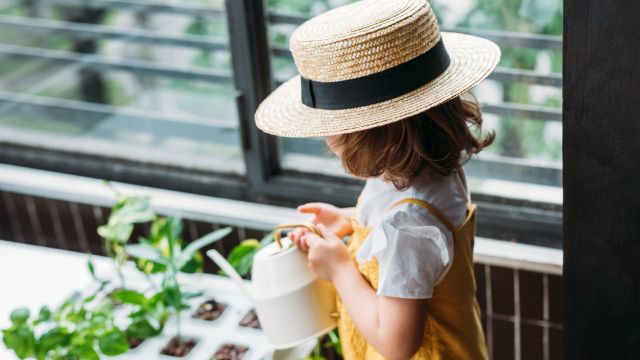
Just like outside plants, your indoor garden will need regular watering. Unlike outdoor plants, though, they will not have their preferred humid environment (you’d be surprised how much plants get from humid air). If possible keep a small humidifier going near your plant (not straight on them). Alternatively, fill your waterproof drip trays with decorative pebbles and let the water sit in them to slowly evaporate around the plant.
Many herbs such as rosemary, thyme, and sage are susceptible to overwatering so allow your plants to dry slightly out between watering. This especially true as winter days shorten which signals to your plants to use less water and nutrients and slow down growing. Adding a grow light during the darkest days of winter will help ease this change. Use either filtered water or let plant water sit for a few hours in an open container to off-gas chlorine and other chemicals in treated city water.
Like all houseplants, indoor herb gardens are susceptible to pests. Keep an eye out for common indoor pests like aphids, spider mites, and whiteflies and treat appropriately with food-safe methods.
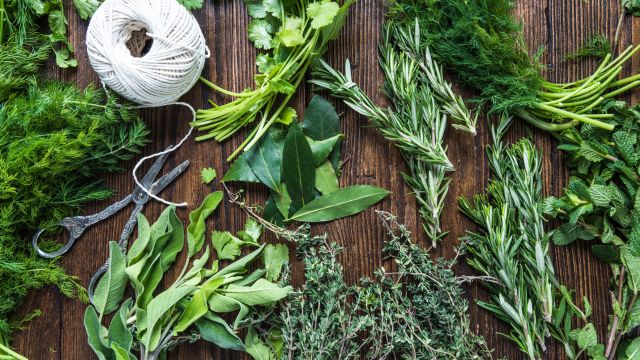
To use herbs, just snip off as much as you need for cooking or drying but leave at least one-third of the plant for regrowth. Don’t let your herbs flower or go to seed (unless you want the seed) because this greatly slows down leaf growth.
Once spring rolls around again, you can plant these herbs outside to get a head start on the season. Just make sure you properly harden them off so you don’t shock their systems with an outdoor lifestyle!
Now is a great time to plant an indoor herb garden so you’ll never be without fresh herbs. We have sage, rosemary, thyme, and few other varieties still in stock but they are going quickly. Shop here.

